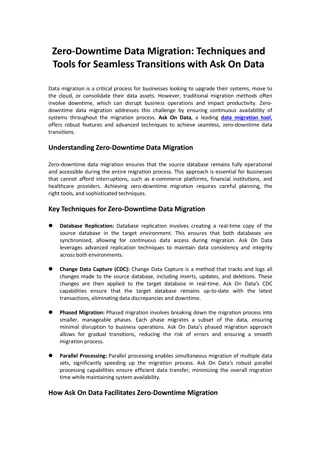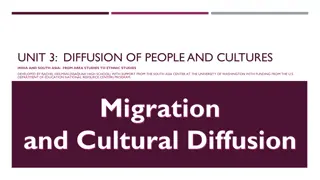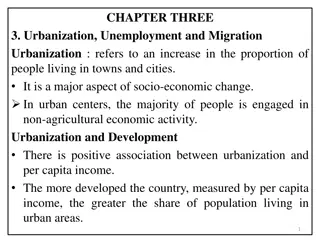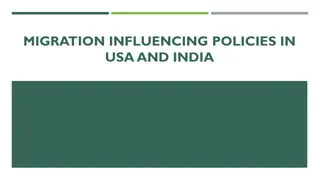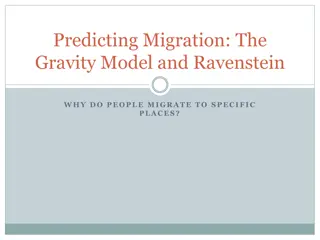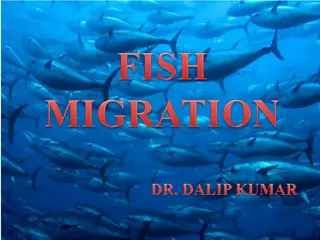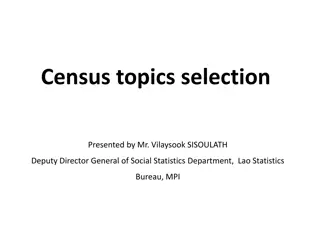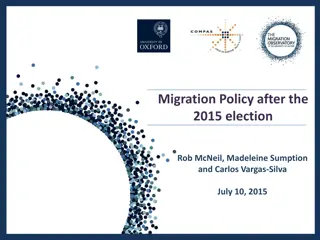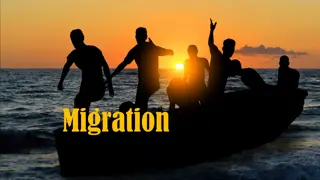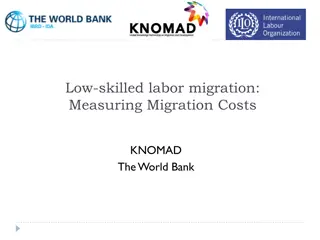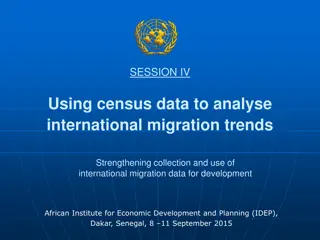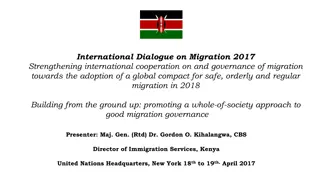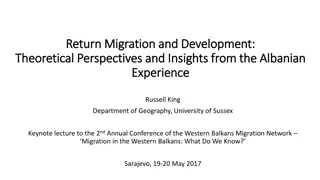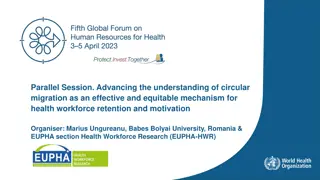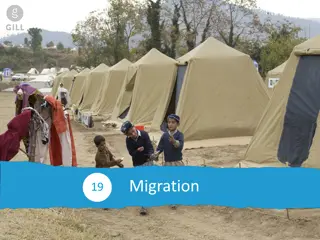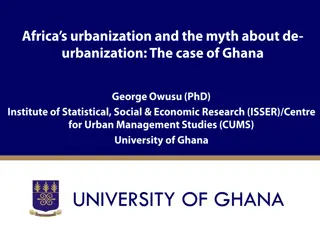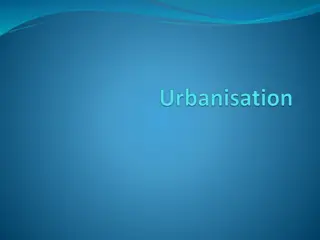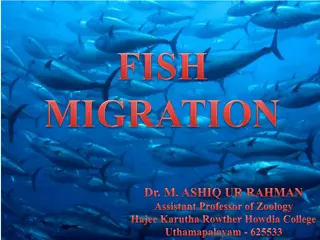Understanding Urbanization: Causes, Impacts, and Migration Patterns
Urbanization is the process of people moving from rural to urban areas, driven by factors like economic opportunities and better amenities. This migration leads to stress on urban resources and poses challenges such as housing, infrastructure, and environmental issues. The movement of people between geographical units involves push and pull factors, leading to internal and external migration, immigration, and emigration. Addressing the consequences of urbanization requires holistic planning and resource management.
Download Presentation

Please find below an Image/Link to download the presentation.
The content on the website is provided AS IS for your information and personal use only. It may not be sold, licensed, or shared on other websites without obtaining consent from the author. Download presentation by click this link. If you encounter any issues during the download, it is possible that the publisher has removed the file from their server.
E N D
Presentation Transcript
Urbanization is defined as the movement of people from communities concerned mainly with primary activities to other communities generally, whose activities are primarily centred in government, trade and manufacturing. Urbanization is defined as the movement of people from communities concerned mainly with primary activities to other communities generally, whose activities are primarily centred in government, trade and manufacturing.
Migration of people from rural to urban Amenities like housing, health, transport, energy, education etc. Rural areas lacking in economic development, indebtedness of farmers, lack of basic services like health, education, transport etc. Government s allotment of funds for economic development are more to urban areas than rural areas. People in rural areas have more attraction to white and blue collar jobs and attraction to urban ways of life.
It is a form of geographical mobility or spatial mobility between one geographical unit and another, generally involving a change in residences from the place of origin or place of departure to the place of destination or arrival. CAUSES: Push factors= Reason for emigrating (leaving a place) because of a difficulty (such as food shortage, war, flood, drought etc.) Economic =Unemployment, Low wages. Non economic= War, Political, Religious or social Pull factors= Reason for immigrating (moving into a place) because of something desirable (better climate, better food supply etc) Economic = Recruitment, Transfer of job Non economic= Marriage, One s desire to live abroad
Internal External Emigration Immigration Population transfer Impelled migration Step migration Chain migration Return migration Seasonal migration Internal External Emigration Immigration Population transfer Impelled migration Step migration Chain migration Return migration Seasonal migration
Stress on Urban resources water supply Domestic water consumption Power supply Waste disposal Problems of medical waste Transport Haphazard growth of suburbs and fringe Health services Vehicular emission Change of landuse Housing Shantytowns Degradation of air and water Impact on biodiversity
Areas in and around cities are generally warmer than comparable rural areas. Urban absorbing surfaces such as rooftops, buildings and paving. Heat is also added from other sources in cities such as fuel combustion and air conditioning units. The result is Urban heat island . Increased air pollution and greenhouse gas emissions. Affects human health. Warmer storm water runoff affecting water quality. Heat island impacts can be reduced by increased solar reflectivity of urban surfaces by installing cool or green roofs or more reflective paving materials. development reduces vegetative cover and adds heat
According to smart cities council, A smart city is one that has digital technology rooted across all city functions. According to Indian government, it offers sustainability in terms of economic activities and employment opportunities to its residents. It denotes an urban area that provides world class, sustainable infrastructure, including uninterrupted clean water and water supply, roads, high speed internet, automated waste disposal sustainable housing and digitized public services. Raising funds is the key challenge.


